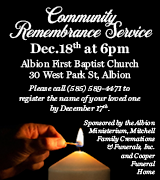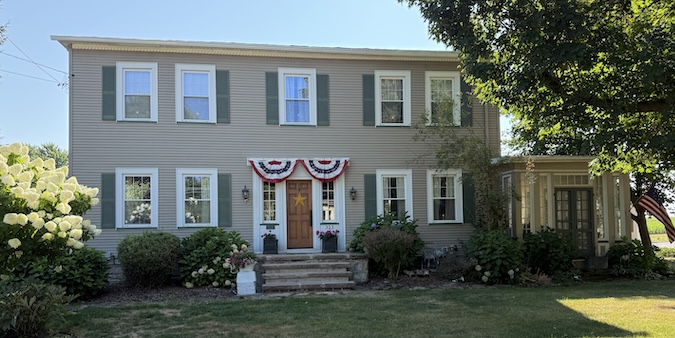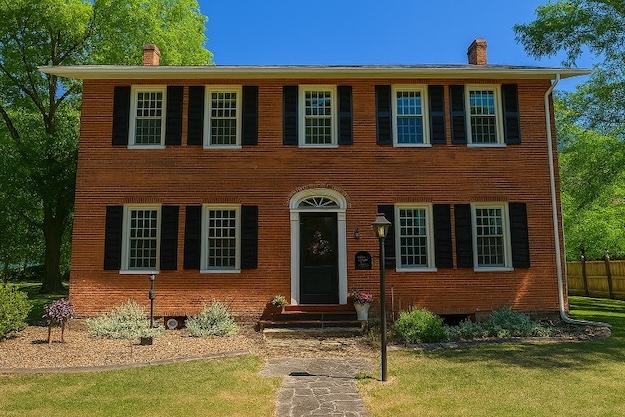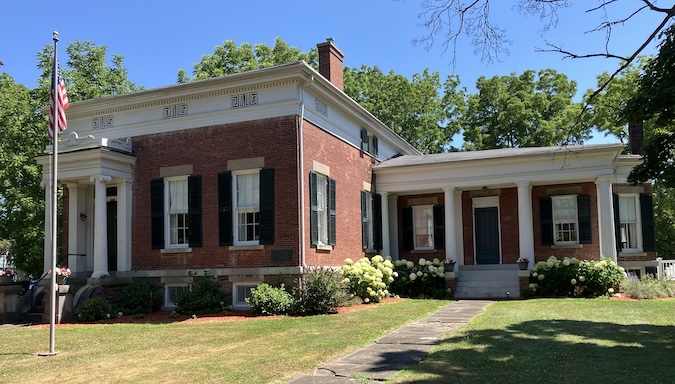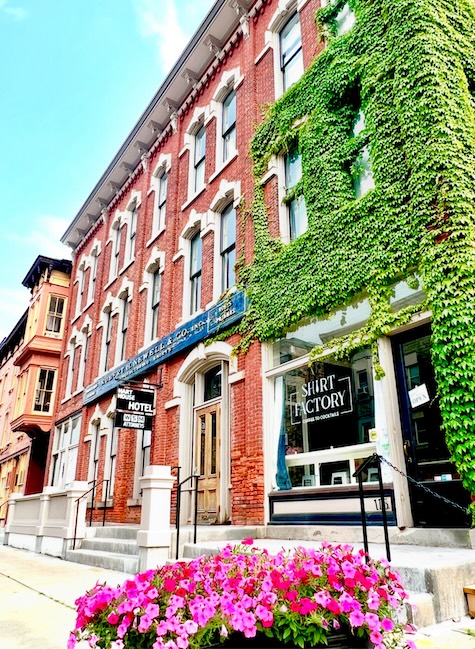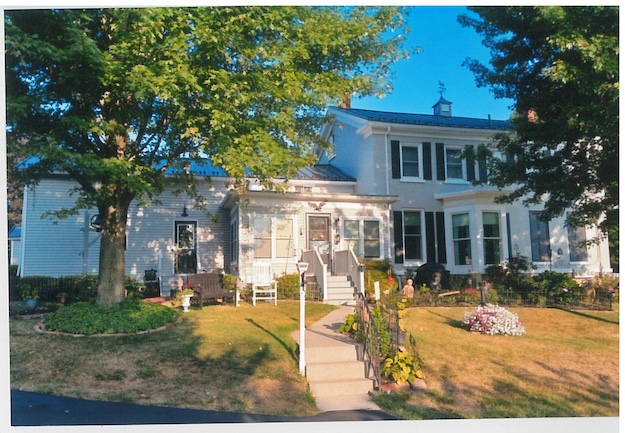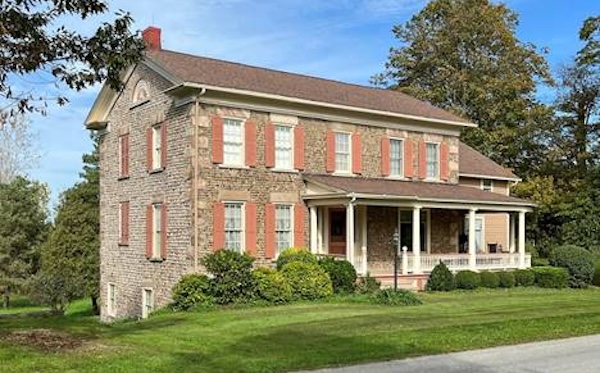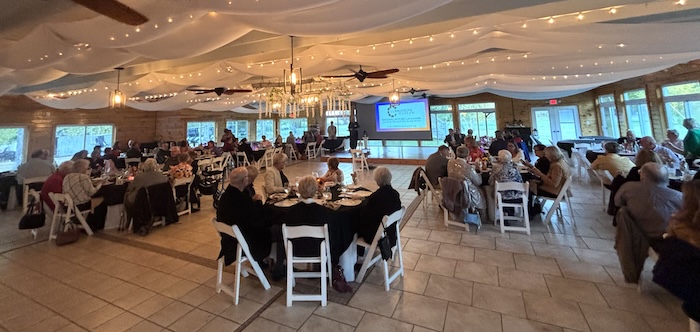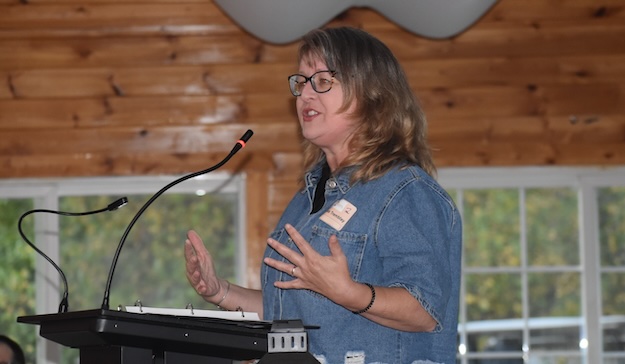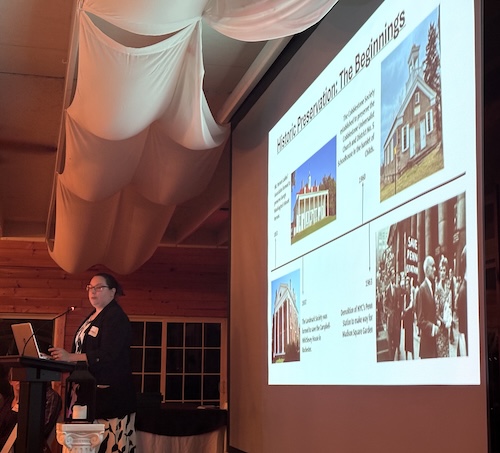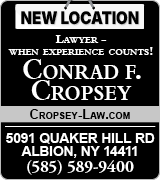Cobblestone Museum presents local preservation awards
Landmark Society official touts preservation for community identity, economic benefit
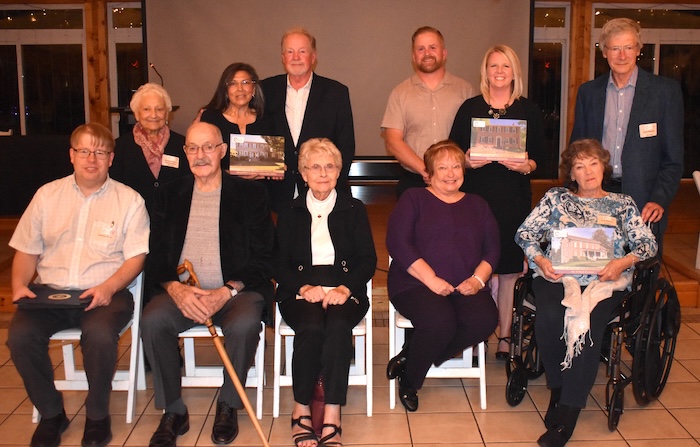
Photos by Tom Rivers: Winners of Preservation Awards from the Cobblestone Society & Museum include, front row, from left: Andrew Meier, Donald & Linda Prince, Cynthia Waters (regent for the DAR in Orleans County), and Sue Beamer. Back row: Rosalind Starkweather, Susan Starkweather Miller, Doug Miller, John and Melissa Gailie, and Henry Beamer.
LYNDONVILLE – The Cobblestone Society and Museum honored six local preservation winners for their many years of effort to maintain and safeguard important buildings in the community.
The Society and Museum welcomed just over 100 people on Friday for the annual preservation awards dinner at the White Birch Golf Course in Lyndonville.
The group also heard from Megan Hillyard, director of preservation service for the Landmark Society of WNY. She presented the keynote address on how preservation is important to community identity and pride, and also pays off with economic benefits through tourism and other initiatives.
This year’s nominees are:
Joseph Hart home of Rosalind Starkweather, and Dougl Miller and Susan Starkweather Miller at 323 S. Main St., Albion.
The Joseph Hart house was constructed between 1820-23 in the federal style. It was built to replace a log cabin which Joseph Hart erected in 1811/12 as an early settler. The home is situated on its third site, still on land purchased by Joseph Hart in 1811 from the Holland Land Company. This parcel was originally part of the town of Barre.
In 1921, the home was moved to its third and current location at 323 South Main St. The Joseph Hart home has been in the Starkweather family since June 1974, when it was purchased by Sue’s parents, Duane and Rosalind Starkweather.
Highlights of the home include a five-inch key to the original lock possessed by the family; wide board floors in the foyer, dining room and living room; an open, U-shaped staircase with landing and an additional staircase leading downstairs to the crescent-shaped breakfast nook in the back of the house; and glass-enclosed sunporch with a fieldstone floor and a floor-to-ceiling fireplace.
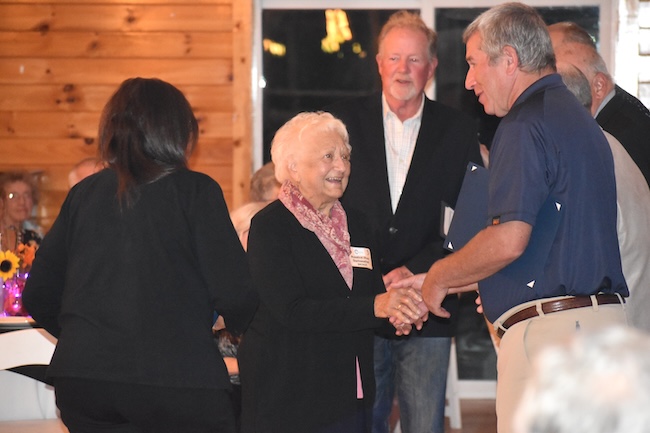
Roz Starkweather accepts citations for her home during a preservation awards banquet on Saturday. Her family has been caretakers of the house for the past 51 years. At right is Barry Flansburg, representing Assemblyman Steve Hawley. Hawley and the County Legislature presented commendations.
The Ebenezer Rogers house at 352 South Main St., Albion, which is the home of John and Melissa Gailie.
John and Melissa Gailie’s Ebenezer Rogers’ house is located at the southern edge of Albion and is the oldest house in the town. Building began in 1816 and was completed in 1820 for Ebenezer Rogers, who helped start the Barre Center Presbyterian Church as well as the First Presbyterian Church in Albion.
Rogers’ house is appealing through the beautiful brickwork, the welcoming front entrance and front door with its fanlight window, which opens to its original stairway and entry.
At each side of the hall and throughout the downstairs, Bible and cross double doors are unpainted originals, revealing the mellow color of the wood and Rogers’ love for his Christianity. In the living room, the early date of the house is displayed in the fireplace mantel and window trim. The delicately-scaled mantel has paired, reeded and columnettes which flank the firebox. The kitchen was remodeled in 2018, and still has the original fireplace and mantel to keep the historic feel of the house.
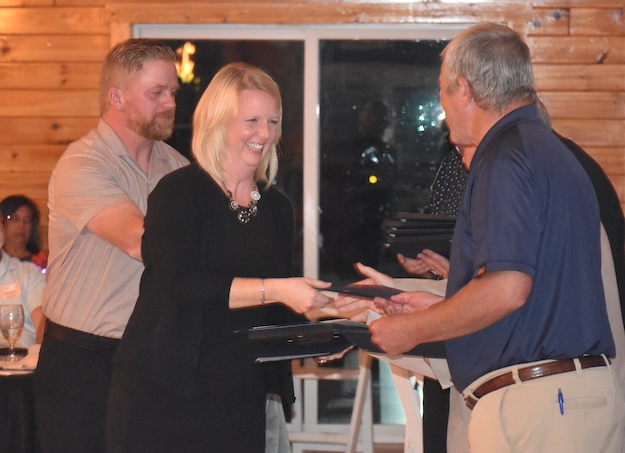
Melissa and John Gailie accept a preservation award on Friday from the Cobblestone Society and Museum.
The Orleans Chapter DAR house at 249 North Main St., Albion, was built circa 1845. Sitting on a spacious shaded lawn, the stately red brick Patriots House served as a residence for the Lee, Tousley and Church families until 1929.
At that time, it was purchased by Emma Reed Webster for the Orleans Chapter Daughters of the American Revolution. The Orleans Daughters are proud caretakers of the Greek Revival building that serves as their chapter house and has been listed on the National Register of Historic Places. Of note in the front hall are the hand-carved newel post and landing, supported by four Doric columns, a most unusual feature.
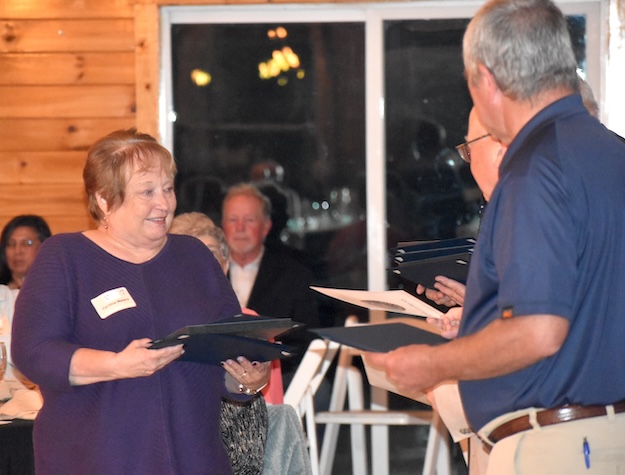
Cynthia Waters, regent for the DAR in Orleans County, accepts the preservation award on behalf of the organization.
Andrew Meier, a Medina native and local attorney, has long admired the Robert H. Newell building at 113 West Center St. Established in 1876 by Elizur Kirke Hart, a banker and U.S. Congressman from Albion, for 86 years, it was home to the Robert H. Newell Shirt Factory, which manufactured custom-made shirts, including many for famous customers, including Winston Churchill and Bob Hope.
The Newell company left the historic building in 2004 and moved to Maple Ridge Road. The business eventually closed in 2007. The village of Medina acquired the building after years of unpaid taxes. The three-story site had been neglected and was in disrepair. It was put up for sale in 2005 and Meier bought it. He was 25 at the time.
He set about the task of methodically renovating and preserving the 14,000 square-foot building, a site that was a hotel for its first 14 years before it became the Newell Building.
Meier has turned the site into commercial space for businesses on the first floor, and upper floors for boutique hotel rooms and a law office.
The oldest portion of home of Donald and Linda Prince was built of wood in 1825. A brick addition was added in 1850 to the house at 14050 State Route 31, Albion. This large house now has more than 5,000 square feet of space. Some of the early residents to call this home include the Hatch family, and later the Ricci and Perrizini families. Don and Linda acquired the home in 1986.
Hank and Sue Beamer are the third family to reside in the Shelp-Beamer House since its construction in 1836 at 10181 West Shelby Rd., Town of Shelby. The Beamers purchased the property in 1985.
This house is located just east of the Niagara-Orleans County line, near Dewey Road. It was built of field and lake-washed cobbles for John Shelp, and is one of six cobblestone structures in the town of Shelby, sitting on 145 acres.
It was built for Shelp, his wife Mary and her father Oliver Cone, a veteran of the Revolutionary War. In 2008, the house, two barns and a milk house on the grounds were listed on the National Register of Historic Places. This three-story house is considered one of the finest examples of cobblestone masonry in Western New York.
About 100 people attended the preservation awards banquet at the White Birch.
Cobblestone Museum director Doug Farley provided an update on a new visitors center at the museum. Farley said construction could start in late October or November on the project which includes a new structure with a 99-person meeting space next to the historic brick house at the corner of routes 98 and 31. The brick house will also receive restoration work.
A garage at the brick house will be removed and an accessibility center added with restrooms.
Brenda Tremblay, an Albion native and classical morning host and producer at WXXI in Rochester, served as emcee.
She said many retirees from outside the area are choosing WNY small towns for retirement, and the historic feel of the communities is a big part of the draw.
Tremblay highlighted “the sheer grit it took to develop Orleans County. These cobblestone houses are such treasures.”
Megan Hillyard of the Landmark Society served as keynote speaker and touted the benefits of historic preservation.
Communities can identify their historic assets through a survey. The Landmark Society is doing that with a barn inventory in Victor and also the Genesee Valley towns of Perry, Mount Morris and Nunda as part of an effort to preserve farm land and agricultural resources in those communities, Hillyard said.
A historic resource survey can be the first step in getting a property or group of sites on the National Register of Historic Places. That can then lead to historic tax credits for projects to preserve and restore the sites, Hillyard said.
She also discussed the benefits of historical markers in bringing awareness to important sites in the community, and helping to develop an identity for the community and promote heritage tourism.
She highlighted organizations that have spearheaded preservation, including the Cobblestone Society that formed in 1960 to protect the Cobblestone Universalist Church and a cobblestone school on Route 104. The Cobblestone Society acquired many other properties and built a museum of many important artifacts from Orleans County.















